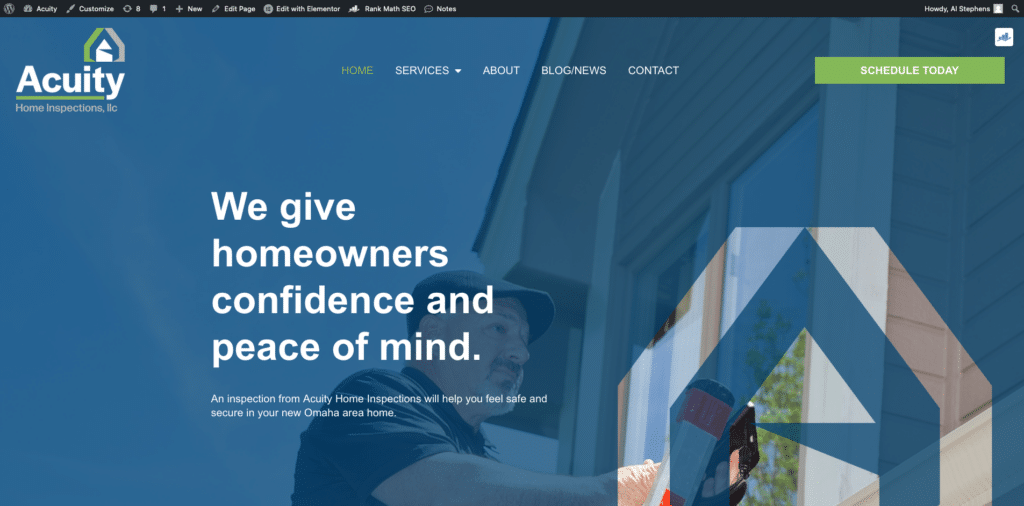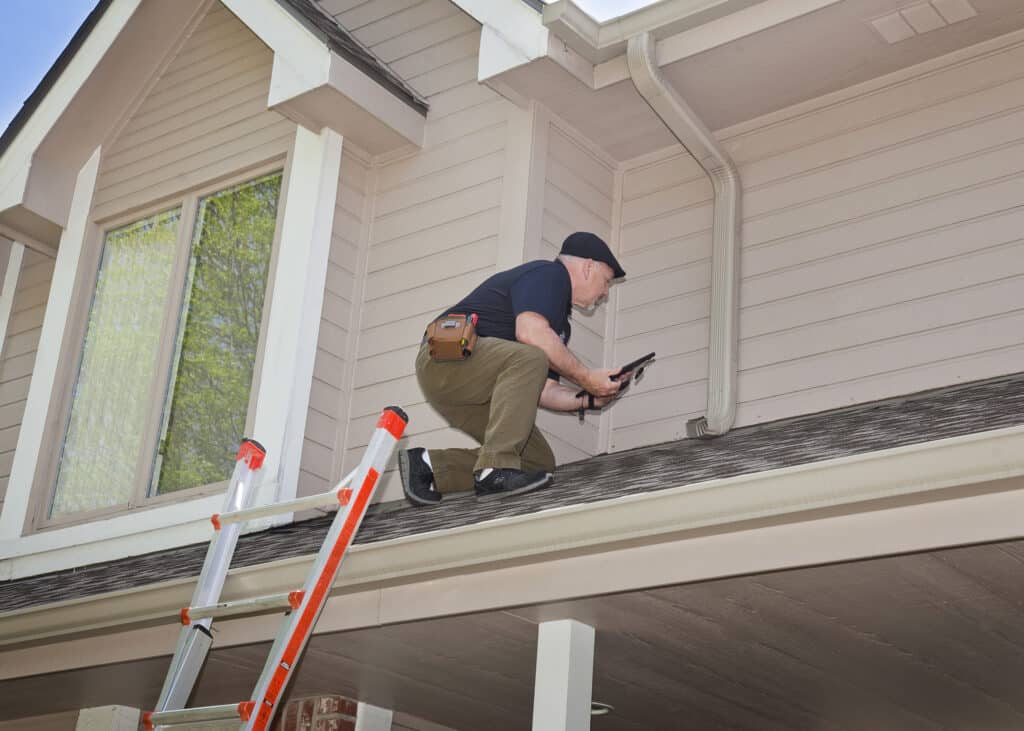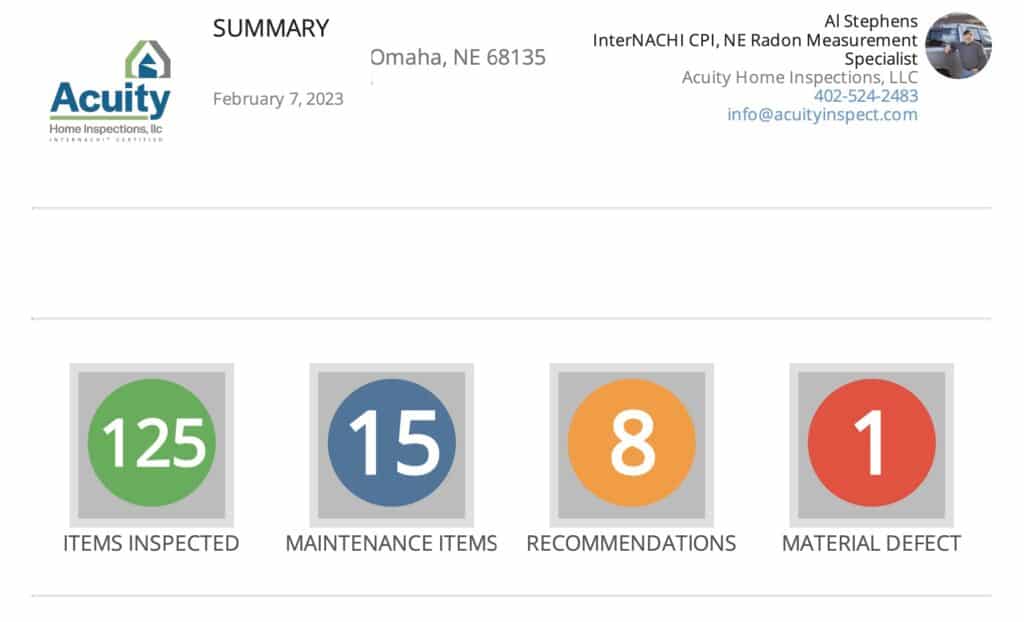We get a lot of questions about home inspections, especially from those who may have never been involved in one, for a variety of reasons or circumstances. The following addresses 3 of the most common questions we hear.
What is a home inspection?
There tends to be a general misunderstanding about what a home inspection is or isn’t. Putting it simply, a home inspection is a limited, non-invasive evaluation of the condition of a home’s exterior and interior systems and structural components. A home inspector’s findings will be communicated in their report as a reflection of their professional opinion.
A home inspection is NOT:

- “Pass/fail” – the inspection is intended to provide a reflection of the home’s condition and issues to enable informed decision-making regarding purchasing, pricing, and/or maintenance and repair strategies. It isn’t a mandate for any corrective measures.
- Permanent – it is a snapshot in time of the home’s condition at the time of the inspection. While a certain system may be in good operational condition during the inspection, it could fail for any number of reasons in an unpredictable timeframe. An inspection report will note whether a system is of an age or condition that could be expected to require service or replacement soon.
- Technically exhaustive – standards of practice for a home inspection do not include dismantling systems or components to identify specific causes of issues. Furniture, appliances, and other personal belongings will not be moved to enable access to, or inspection of, every square inch or component of the home.
- A code inspection – every municipality or governing agency has its own set of requirements that must be met during the construction or major renovation or expansion of a property. Permitting and code inspections are provided during those activities by the contractors involved. A home inspection will report on observed structural, operational, and safety-related issues that may or may not relate to local codes.
- The only inspection a home buyer should consider – in addition to a general home inspection, more detailed inspections may be required or warranted, including wood-destroying organisms (termites), mold and air quality, radon, pool, hot tub, and sewer/septic inspections. Also, a home inspection may reveal issues for which the inspector recommends further evaluation by a qualified expert in areas such as electrical, HVAC, or structural engineering.
Why should I have a home inspection?
An inspection is a valuable component of any situation involving a real estate transaction or ownership. Whether you’re buying or selling an existing home, building or moving into a newly constructed home, or want to confirm the condition and create a “to-do” list for your current home, an inspection is an investment that can pay back its cost many times over in savings related to the prevention of major issues with a property’s condition.

See our previous blog “9 Reasons Not To Skip a Home Inspection” for more details.
What does the home inspection process look like?
While every inspection company and inspector may have their own approach to the process and order of conducting their inspection, the following reflects a typical Acuity home inspection (excepting occasional variations due to weather and other factors).
Scheduling – the process starts with you requesting and confirming the date of your inspection. This can be done by phone, email, text, or our online scheduling tool.

Generally, the start time of an inspection will be determined by your availability at the end of the inspection. A vital part of the inspection process is for you and your agent to meet with us at the conclusion of the inspection to review the report summary and walk around to see and understand its findings. A typical inspection will take about 4 hours to complete, so (for example) if you’re available at 5:30 PM, we’d plan to begin the inspection at about 1:30 PM.
Once the schedule has been confirmed, you and your agent will receive an email confirmation of your inspection, including links to the Pre-Inspection Agreement and information regarding payment options.
Leading up to the start of the inspection, everyone will receive multiple email reminders of the inspection schedule, including confirmation of who will be where and when.
The inspection – on the day of the inspection, upon arrival, we’ll usually start with the exterior of the home to inspect, photograph/video, and report on the presence and/or condition of all components of the grounds and structure (for a full list of items inspected CLICK HERE). Whenever possible (and safe), we’ll climb onto the roof to view all related components. From there, we’ll move to the inside and inspect all rooms, systems, and components, including the basement, attic, and other areas.

A typical home inspection will involve more than 120 items which will be documented during the inspection process with written descriptions, photos, and videos. Acuity uses Spectora Reporting Software for documenting and reporting our inspection observations.
The report – at the conclusion of the inspection, when you arrive at the home to review our findings, we’ll provide a high-level overview of the inspection, describing our overall impressions of the home and its condition, and the number and types of “defects” we may have found. We’ll then review our “Summary Report” which provides a breakdown of just the defects observed. As mentioned, this is the most important part of the process as it’s our opportunity to explain to both you and your agent what we saw, why it’s a defect, and what our recommendations are for each item. Our objective is to make sure everyone fully understands everything, so if that means walking around to look at, touch, smell, or listen to the individual issues involved, that’s what we’ll do.

Once we’ve completed our face-to-face review of our inspection findings, we’ll head back to our office and finalize all the details and information in our report. Generally, we’ll “publish” the report within 1-2 hours which will send your report link to you and your agent. As reflected in the SAMPLE REPORT, you’ll have the option to view the “Full” or the “Summary” version of your report.
The Full Report includes written descriptions and images of everything we looked at, including helpful information such as the location of utility shutoffs, maintenance recommendations, and other details to help you understand the home. While the Full Report may seem overwhelming, it’s a great resource for you to keep on hand for future use.
The Summary Report (what we reviewed at the conclusion of the inspection) will provide you with the list of any defects observed and can be used for you and your agent to discuss and make decisions regarding the potential financial impact of those items and what, if any, negotiation regarding your purchase offer is warranted.
Follow-up
After you’ve received your report and had a chance to digest everything, we welcome any follow-up communication from you or your agent regarding the report, our findings, or recommendations. In any event, you’ll receive several emails from us over the following days, just checking to make sure you received and understand your report.
We’re passionate about helping homeowners, buyers and sellers understand the condition of their property and eager to answer any questions you might have about the value an inspection could offer to you! Contact Acuity to learn more!


